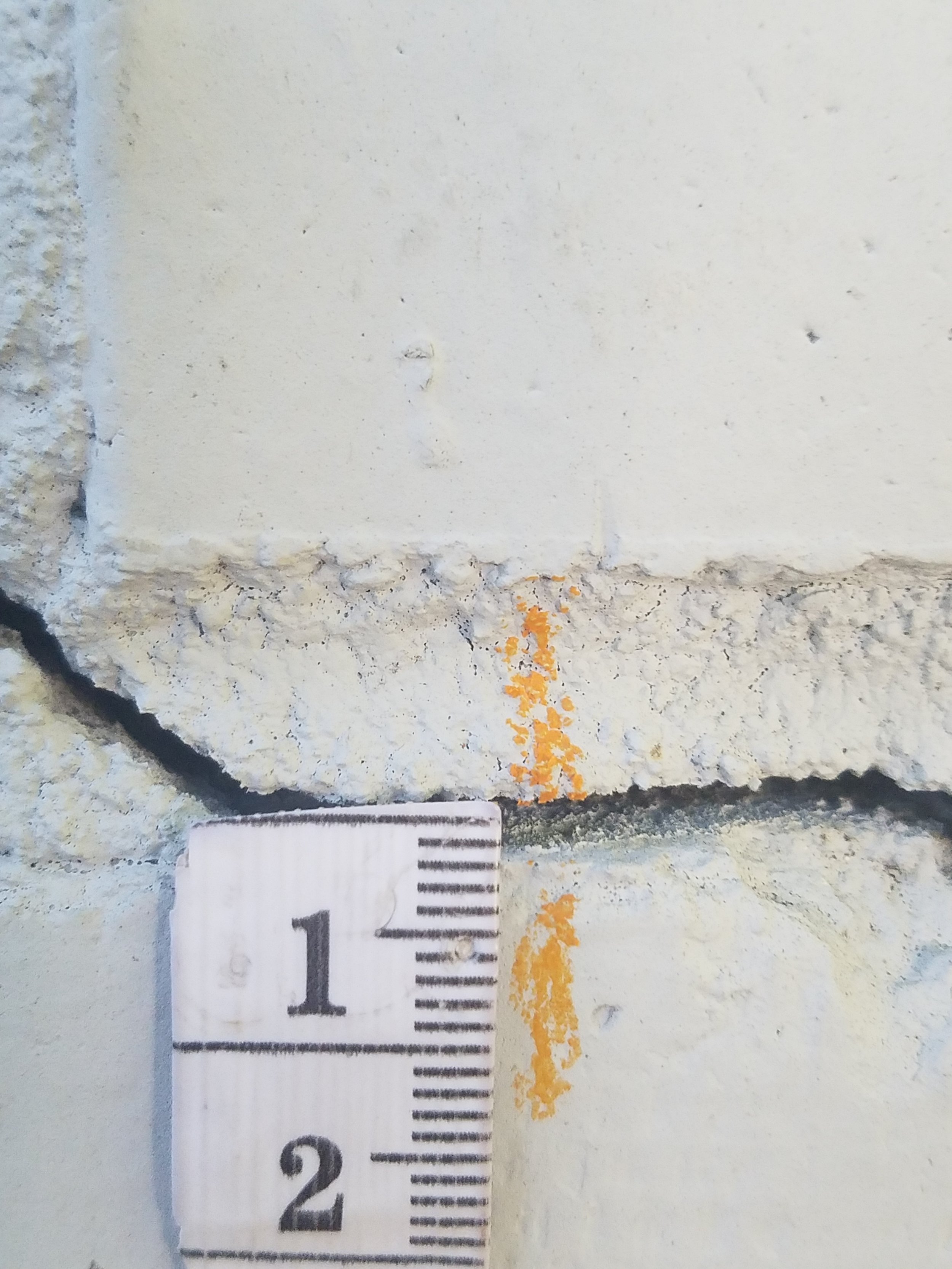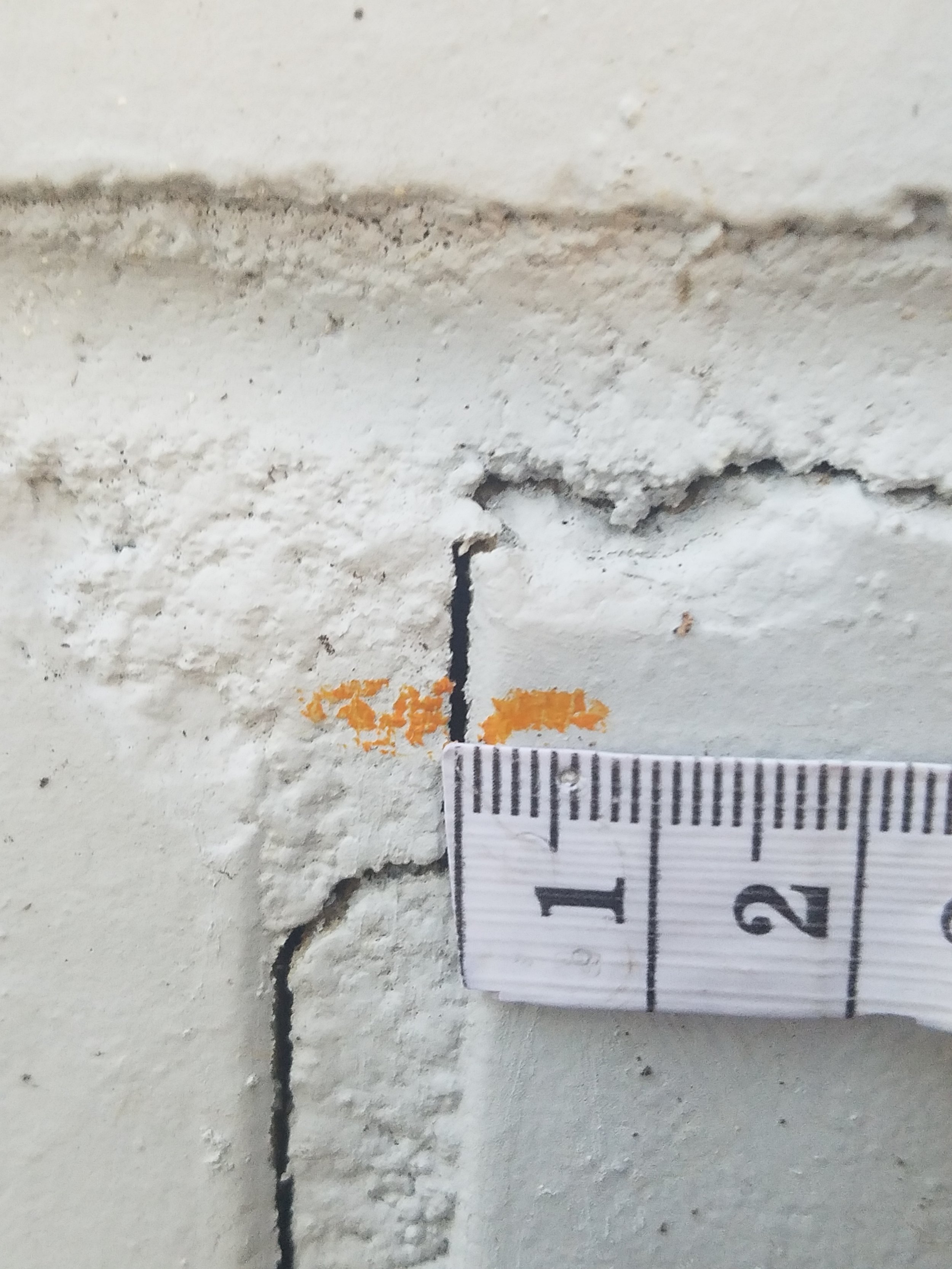FOUNDATIONS - The "F" Word FOR HOMEOWNERS
Remaining calm when the bottom is literally falling out.
Foundations. This might be the "F" word of homeownership. Nothing strikes up Fear, Frustration, and other words that I will not mention (but absolutely know that you can envision where I am going with that). No one wants to hear that they have a foundation problem. I know I didn't when I realized we had one. I had slowly watched some cracks develop in our house. We had even hired them to be fixed, and they were, but they rather quickly reappeared. This work was completed by contractors that I know and trust. I had a gut feeling that there were bigger problems lying below. We had just recently re-flashed our chimney and added a new roof to our front porch. A few days ago, I was getting the kids off to school and I turned around only to see what I had feared. There was a large crack in the chimney. The Chimney was separating itself from our house. Inside, it was pulling the wall with it. Not good. Immediately, I found myself immersed in a series of "F" words; I turned to fear, frenzy, and frustration. I was scared. I did not know where to start, the costs involved, who to trust, and more. I had forgotten another "F" word for foundations - FIXABLE.
Yup. Like anything else that breaks down in a home, foundations are fixable. When I unpacked all those "F" words, I realized that at the core of all my fear was the fact that I did not know enough about the problem to find peace with the solution. Many times, homeowners fear what they do not know. I find that the more I understand and analyze the issue, the more comfortable I become with the problem. The more comfortable I am with the problem, the less fear there is. Once the fear has subsided, I am able to gain clarity and work to problem solve the issue. When I have a plan, I am much more calm, objective, and able to handle fixing the problem.
Why do foundation problems scare us? I suppose is the idea that the house is going to crumble and fall down around us, or the idea that we are going to have to go bankrupt fixing it. Insurance companies (with minor exceptions) don't include the foundation in a homeowner's plan because the scope of repairs can be costly. I would add that it is the fear of the unknown that also increases the scare factor. Let's look at these fears.
Fear #1: The house will fall
Okay, it would be scary if your house completely fell down all around you. No one would be okay with that. However, in most cases, your foundation has signs of warnings or issues far before the entire structure is shot and your house instantly crumbles to the ground. Usually, the entire foundation does not fail all together, but rather parts of it become compromised. There are several reasons the compromise can happen. Here are some major and more common reasons the foundation might fail:
- Soil Shifting - contraction and expansion/recoil of the soil changes the pressure on the foundation and slowly causes movement
- Highly wet/dry regions can shift the soil quality and change the pressure against the foundation.
- Time - nothing lasts forever. Sometimes things just give out
- Poor Worksmanship - hate to mention this one, but not everyone does good work. validating a contractor and company is very important with structural work.
- Natural Disasters - floods, earthquakes, tornados - all can change the landscape and structural integrity of the foundation
- Water flow against the house - can alter the masonry and positioning of the foundation
interior wall crack and mantel pulling from the wall
Fear #2: Cost
We all freak out when things are expensive, especially when those things are not things we want to spend money on. Spending 10K on a foundation repair is a lot less satisfying than a new kitchen remodel. Definitely does not give you the "wow" factor when the work is hidden. However, structural problems are things that cannot be ignored. While the first fear of the house falling down is unlikely, if you let things go, then eventually things will start to crumble...not good.
The good news is that a foundation does not usually fail all at once. Typically, there are portions that require your attention and reinforcement to improve their function and stability. These portions are often stabilized by "push piers" that are drilled down to the bedrock surface inside the soil. From that stable surface, they push back up under your foundation to reinforce your existing structure and prevent further compromise to the stability of your foundation. In North Carolina, each pier that is required is roughly $1200. The amount of piers required is based upon your current structure, length, and size, which is calculated by state law and code requirements. While this is not cheap, it is also better than 40k to lift your entire house and replace your entire foundation. While that can happen from time to time, it is usually not the typical repair.
fireplace mantel pulling from the wall
Fear #3: The Unknown
I will be the first to admit, I am not an expert in the world of foundations. In fact, I used to know very little. This fear of the unknown is possibly the worst fear of all because we feel overwhelmed by where to begin. Let me help you with that:
- Step 1: Identify the problem - Look for cracks in your foundation and bricks. Large cracks are often seen going along the mortar and are called step cracks. If you see cracks, measure them. Note a spot on the wall where you are measuring and mark it with a crayon (wax based). This will help you identify where you made the mark so you can consistently measure the crack. Measure it once/week and note any changes. You might see the crack enlarge or shrink with rain and dry seasons, or you might see it steadily increasing. Monitor this. You can also buy foundation crack monitors that sit inside the crack and help keep up with measurements for you. If you see the crack progressing, you might have a problem
- Step 2: Consult a Structural Engineer - Once you believe you have an issue, contact a structural Engineer that you can trust to evaluate your problem. Ask for recommendations from Architects and contractors you trust. Finding a good engineer will be important so they can survey your site and provide recommendations for repair. Having this done will cost around $500, but you will need to have this completed as most states require this prior to any foundation repairs being completed.
- Step 3: Gather your Estimates - Ask your trusted structural engineer for recommendations regarding repair companies. Trust these recommendations. There are lots of companies out there that are willing to do work, but that does not mean they will do it well. You want only the best people to do this type of work. Once you have your list, contact at least three companies to provide you with estimates for repair. You want "apples to apples" comparisons so you can correctly see what price differences are for the same work. Use your engineering report to instruct the contractors in what work you want completed. Because you already have an outline regarding what work NEEDS to be completed (from the engineer), you will avoid being "oversold" by any of the companies (aka, them telling you that you need something that you don't. Information reduces that fear). Ask about their warranty. That needs to be part of your evaluation of the work. Some companies will offer a 5 year warranty, and others up to a 75 year. Ask if the warranty is transferrable to a new owner if you sell your home; you want to know what you are buying
trim separation
- Step 4: Barter. Yup. You now have three estimates and you know what work needs to be done. Let's pretend you trust one company more, but their price is higher than another, or they offer a shorter warranty. Work with the people you trust and ask for them to price match or warranty match the competition. The worst they can say is "no." Also ask if there is a discount for paying up front in cash if this is an option for you. It might save you 10%. If your estimate is 10K, then you'd save $1,000. That's not bad.
- Step 5: Repair That Foundation - "suck it up, buttercup". I know, not cool, but that is what needs to happen. Again, you need to decide that you have to stop caring about it being expensive, and just get it done. You will feel better in the long run if you stop worrying about it.
- Step 6: Document - that is something that should be done along the way, but be sure to keep the engineering report, repair procedure, and receipts from all this work. When it comes time to sell your home, there might be concerns with foundation integrity. Having these documents in hand can actually help promote the sale, especially when you might be able to say there is a 75 year warranty on the work.
ceiling crack
So, you might wonder where that leaves us. Well, we are having the chimney repaired for sure. That will be about 2-3K. As for the other cracks in the side of the house, we are monitoring them for now as we don't see as much movement inside the house on those. If they progress in the next six months, then we will have to throw another 8K on that. At least we have some time to prepare. More than anything, we know what we have on our hands. Our home is lovely, but the bones underneath need to be strong. It's kind of like a super model with osteoporosis. She is only going to look good for so long...if the bones underneath break, it's all over :) Better to be informed so the issues can be solved, then to run around with all the "F words" that come to mind. Most things are fixable. This is too.
Have you had to fix your foundation? What was your experience?
- Casey














